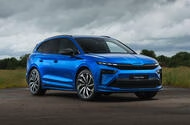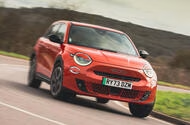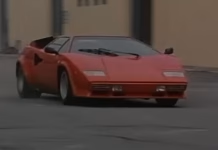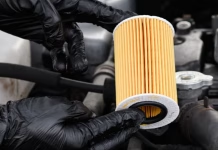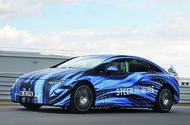Space Force Secures Major Funding Boost as Civilian Spaceflight Faces Budget Cuts

Skoda Enyaq Cargo Debuts as Electric Van with Impressive Range for Fleet Buyers
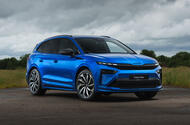 New van version swaps back seats for a big load bay and is aimed at company fleets
New van version swaps back seats for a big load bay and is aimed at company fleets
Skoda has launched a new van variant of its Enyaq electric SUV that trades its back seats for an expansive cargo area.
Developed with specialist Strongs Plastic Products, the conversion brings a flat plastic load bay with tethers and removable dividers for securing loose items, and a plastic bulkhead with a small window into the cockpit. The Enyaq Cargo’s rear windows are tinted black to hide anything stored inside from prying eyes.
The conversion costs £1815 plus VAT and is aimed at fleets. It is based on the Enyaq 85, which is priced from £44,310, inclusive of VAT and registration charges. The model packs a single rear-mounted 282bhp motor and a 77kWh battery pack, yielding a range of 359 miles. It can be recharged at up to 135kW, allowing a 10-80% refill in 28 minutes.
It can also be had in 85X form, which adds a motor up front for four-wheel drive. Its total power output is unchanged from 282bhp but its range is reduced to 332 miles. To compensate, its peak charge rate is boosted to 175kW.
Skoda has told Autocar that Enyaq Cargo does not qualify for the government’s plug-in van grant, which discounts the price of small electric vans by up to £2500.
The Enyaq Cargo was born out of a partnership with the National Grid, which has ordered 70 examples. National Grid Energy Distribution currently runs more than 300 electric vans and 600 electric company cars, according to Skoda.
The Enyaq Cargo will be offered exclusively to fleet buyers through area fleet managers in Skoda’s dealer network.
Next-Gen Satellites: The Critical Backup for National Security

Honda Jazz Hybrid Review Is This Practical Supermini Still the Smartest Choice
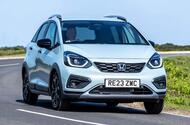 Is an economical hybrid powertrain enough to make the latest Jazz hit the high notes? They say it’s lonely at the top, but for the Honda Jazz, the same can equally be true towards the other end of the scale.Indeed, the hybrid superminis of the world is a group that counts the Honda Jazz, Toyota Yaris, Renault Clio E-Tech and the MG 3 as its only members.Compared to its rivals, the Jazz has always put functionality and practicality high on its list of must haves, and is often defined by its clever interior packaging. Since its 2001 launch, the relatively compact Honda’s exceptional practicality and versatility have helped it to win favour with more than seven million buyers around the globe.Hoping to build on that success is the fourth-generation model, which arrived on UK roads in 2020 before receiving a heavy update in 2023. What sets it apart from its supermini rivals is that the Jazz is sold exclusively with a petrol-electric powertrain in a bid to keep pace with ever-tightening emissions regulations. But since this generation of Jazz made its debut in 2020, new versions of both the Renault Clio and Toyota Yaris have arrived. So how does the Honda Jazz stack up against its hybridised competitors, and is its quirky styling and intelligent packaging still enough to catch the attention of wannabe supermini owners. The Jazz line-up at a glanceThe Honda Jazz is offered exclusively as a hybrid in the UK and is available in four different guises: Elegance, Advance, Crosstar Advance and Advance Sport. Elegance opens the line-up and gets 15in alloys, parking sensors and adaptive cruise control, while mid-rung Advance adds larger 16in wheels, heated seats and steering wheel and keyless entry. The Crosstar Advance boasts a more rugged aesthetic, featuring a raised ride height and additional body cladding to make it look more off-road friendly. Bookending the Jazz range is the Advance Sport, which gets the same kit as the Crosstar, but goes without the go-anywhere styling.
Is an economical hybrid powertrain enough to make the latest Jazz hit the high notes? They say it’s lonely at the top, but for the Honda Jazz, the same can equally be true towards the other end of the scale.Indeed, the hybrid superminis of the world is a group that counts the Honda Jazz, Toyota Yaris, Renault Clio E-Tech and the MG 3 as its only members.Compared to its rivals, the Jazz has always put functionality and practicality high on its list of must haves, and is often defined by its clever interior packaging. Since its 2001 launch, the relatively compact Honda’s exceptional practicality and versatility have helped it to win favour with more than seven million buyers around the globe.Hoping to build on that success is the fourth-generation model, which arrived on UK roads in 2020 before receiving a heavy update in 2023. What sets it apart from its supermini rivals is that the Jazz is sold exclusively with a petrol-electric powertrain in a bid to keep pace with ever-tightening emissions regulations. But since this generation of Jazz made its debut in 2020, new versions of both the Renault Clio and Toyota Yaris have arrived. So how does the Honda Jazz stack up against its hybridised competitors, and is its quirky styling and intelligent packaging still enough to catch the attention of wannabe supermini owners. The Jazz line-up at a glanceThe Honda Jazz is offered exclusively as a hybrid in the UK and is available in four different guises: Elegance, Advance, Crosstar Advance and Advance Sport. Elegance opens the line-up and gets 15in alloys, parking sensors and adaptive cruise control, while mid-rung Advance adds larger 16in wheels, heated seats and steering wheel and keyless entry. The Crosstar Advance boasts a more rugged aesthetic, featuring a raised ride height and additional body cladding to make it look more off-road friendly. Bookending the Jazz range is the Advance Sport, which gets the same kit as the Crosstar, but goes without the go-anywhere styling. New Tariffs Set to Shake Up Car Prices This August

Fiat 600 Review A Stylish Electric Comeback for the Modern Family Car
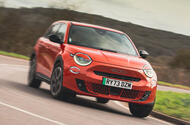 Compact SUV wades in with a cheery design, decent electric range and reasonable pricing – and shuns the bloat of many modern family cars The Fiat 600 is not all that it appears. At first glance, you could certainly mistake the new car for being a direct replacement for the firm’s 500X crossover hatchback.Well, supposedly it isn’t. While the 500X is set to continue in production for at least another couple of years, this new, slightly smaller and lower hatchback slots in just beneath it in Fiat’s range, where it will play bigger, four-door sibling to the Fiat 500 – just as the original 600 of the 1950s did.As such, Fiat is trumpeting this car as its return to the traditional European supermini market, in which it last offered a car back in 2018, before the Punto was withdrawn. And so rumbles on Fiat’s now well-worn product strategy of copying the successful recipe of the smaller 500 and pasting it into as many parts of the car market as it possibly can, and giving 500 owners as many new and interesting reasons to come back and trade up as it can think of.This time, owners of the Fiat 500 Electric will be in the crosshairs too. That’s because the 600 will be offered in both EV and 48V mild-hybrid form, the former adopting Stellantis’s latest e-CMP2 chassis, battery and motor technology, but delivering it at a lower showroom price than its many group relations, in what feels like a commercial move borrowed from an old Fiat playbook.So, for the first time since the turn of the 1970s, Fiat will have both a 500 and a 600 in its showrooms.The Fiat 600, like its Jeep Avenger relation, is offered in both 48V mild- hybrid and EV forms. Entry-level spec depends on the powertrain you are buying, with the 600e getting more equipment than the equivalent bottom-rung Hybrid.Run all the way to a 600e La Prima and you receive 18in alloy wheels, extra chrome body trim, heated massage seats, a reversing camera, a powered tailgate, adaptive cruise control and wireless device charging.
Compact SUV wades in with a cheery design, decent electric range and reasonable pricing – and shuns the bloat of many modern family cars The Fiat 600 is not all that it appears. At first glance, you could certainly mistake the new car for being a direct replacement for the firm’s 500X crossover hatchback.Well, supposedly it isn’t. While the 500X is set to continue in production for at least another couple of years, this new, slightly smaller and lower hatchback slots in just beneath it in Fiat’s range, where it will play bigger, four-door sibling to the Fiat 500 – just as the original 600 of the 1950s did.As such, Fiat is trumpeting this car as its return to the traditional European supermini market, in which it last offered a car back in 2018, before the Punto was withdrawn. And so rumbles on Fiat’s now well-worn product strategy of copying the successful recipe of the smaller 500 and pasting it into as many parts of the car market as it possibly can, and giving 500 owners as many new and interesting reasons to come back and trade up as it can think of.This time, owners of the Fiat 500 Electric will be in the crosshairs too. That’s because the 600 will be offered in both EV and 48V mild-hybrid form, the former adopting Stellantis’s latest e-CMP2 chassis, battery and motor technology, but delivering it at a lower showroom price than its many group relations, in what feels like a commercial move borrowed from an old Fiat playbook.So, for the first time since the turn of the 1970s, Fiat will have both a 500 and a 600 in its showrooms.The Fiat 600, like its Jeep Avenger relation, is offered in both 48V mild- hybrid and EV forms. Entry-level spec depends on the powertrain you are buying, with the 600e getting more equipment than the equivalent bottom-rung Hybrid.Run all the way to a 600e La Prima and you receive 18in alloy wheels, extra chrome body trim, heated massage seats, a reversing camera, a powered tailgate, adaptive cruise control and wireless device charging.Racing Through History: Valentino Balboni Pushes the Countach to Its Limits on Italian Roads
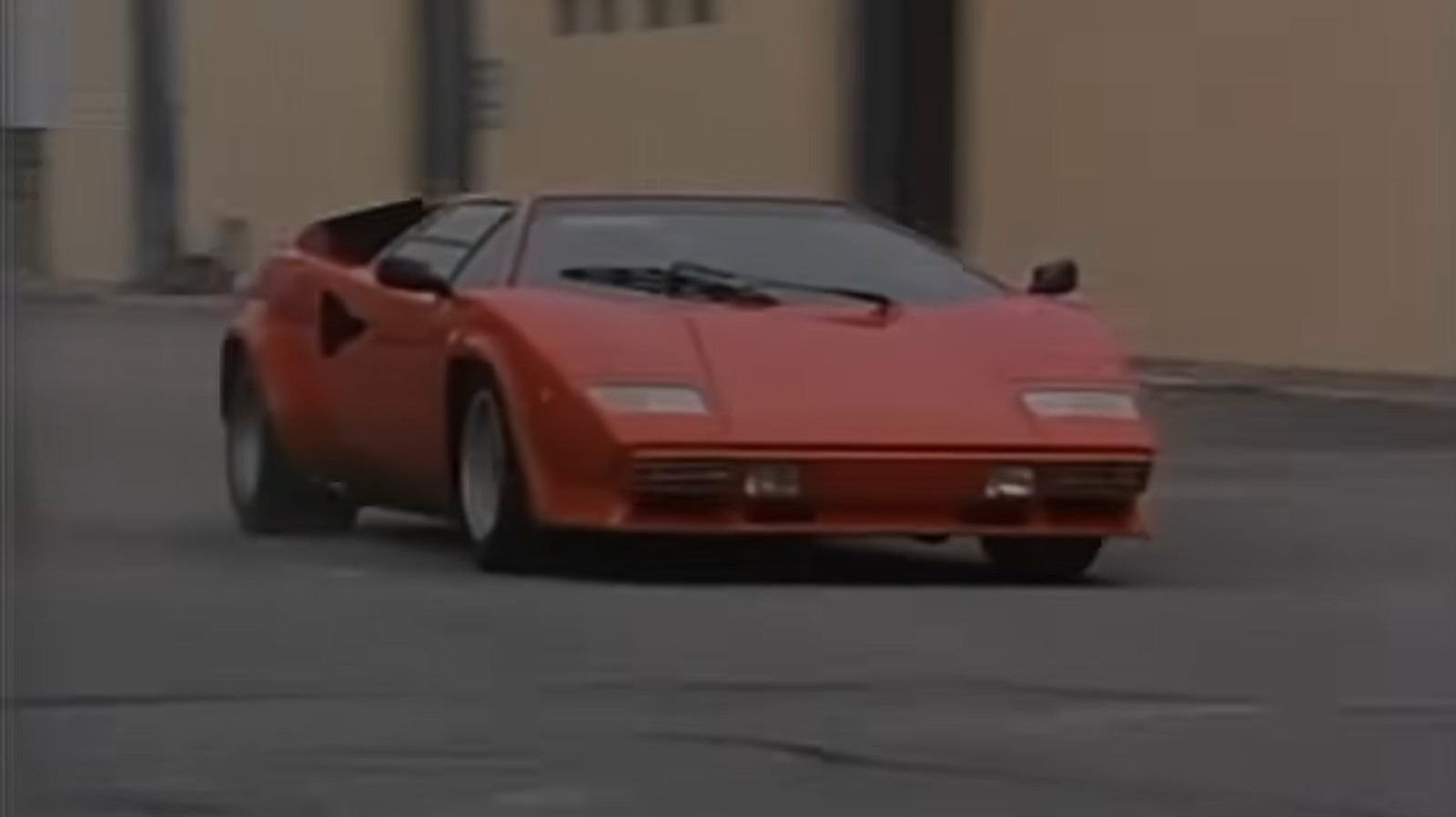
Lexus Tops List of Most Stolen Cars as Range Rover Thefts Drop Sharply
 Brand has five of the top eight cars most likely to be stolen
Brand has five of the top eight cars most likely to be stolen
Five Lexus models were among the top 10 cars most likely to be stolen in 2024, according to government data – and the Range Rover, previously a high-profile target for car thieves, is now among the most protected.
Last year, more than 61,000 cars were stolen across the UK. The Ford Fiesta – the country’s most popular second-hand car, with 306,207 sales in 2024 – topped the table for overall number of thefts, at 4719.
However, new analysis of the latest DVLA data, which ranks stolen cars as a proportion of the total number registered, paints an alternative picture.
It reveals the Lexus ES 300 as the model most likely to be stolen in 2024, with one in 30 taken. It is followed by the Lexus RX 450 and Mercedes GLS, both one in 39.
The other Lexus models in a top 10 dominated by slightly older and relatively low-volume, higher-value cars are the LC 500 (fifth place, one in 55), the UX 250 (sixth, one in 62) and the NX 300 (eighth, one in 75).
Applying the same analysis to the Fiesta ranks the model in 312th place.
According to the analysis by PR agency Loop, Lexus is the second-most-likely brand to be stolen (one in 120) after Abarth (one in 116).
The Abarth most likely to be stolen is the 595, with a one-in-87 chance, ranking it ninth in the model table.
A spokesman for Toyota premium brand Lexus said: “Toyota GB has invested millions of pounds in a variety of security solutions. Our anti-theft measures form part of a nationwide customer care offering.
“For example, at a cost of more than £10 million to Lexus, selected customers were provided with a free Tracker vehicle location service. As a result, a 96% recovery rate has been achieved. We have subsequently rolled out Tracker installation as an option for buyers of certain models.”
Following similar incidents of theft, JLR updated security software for its new and existing vehicles last year. As a result, having previously been among the most stolen models, the Range Rover now ranks 52nd in the table of cars most likely to be stolen, behind other premium SUVs such as the Bentley Bentayga (36th) and Mercedes GLS (third).
“Lexus is making considerable efforts to protect its customers’ cars but JLR suffered a rise in thefts sooner than it and so has had more time to react and develop solutions,” said Clive Wain, head of police liaison at Tracker. “However, its cars are still being stolen. There is a thriving market overseas for Lexus, JLR and other premium vehicles and we recover many at docksides. Until this export market ends, recovering these vehicles will remain an ongoing programme for us.”
Commenting on Abarth and Fiesta thefts, Mark Silvester, a crime prevention specialist at West Midlands Police, said: “These cars are usually stolen to be broken for parts. Fortunately, we’re identifying more stolen cars and locating and closing down chop shops where they are dismantled.
“Among other countermeasures, we advise people to have their cars serviced at a garage or main dealer with access to the latest security software updates.”
Why Using the Wrong Oil Filter Size Can Damage Your Engine and How to...
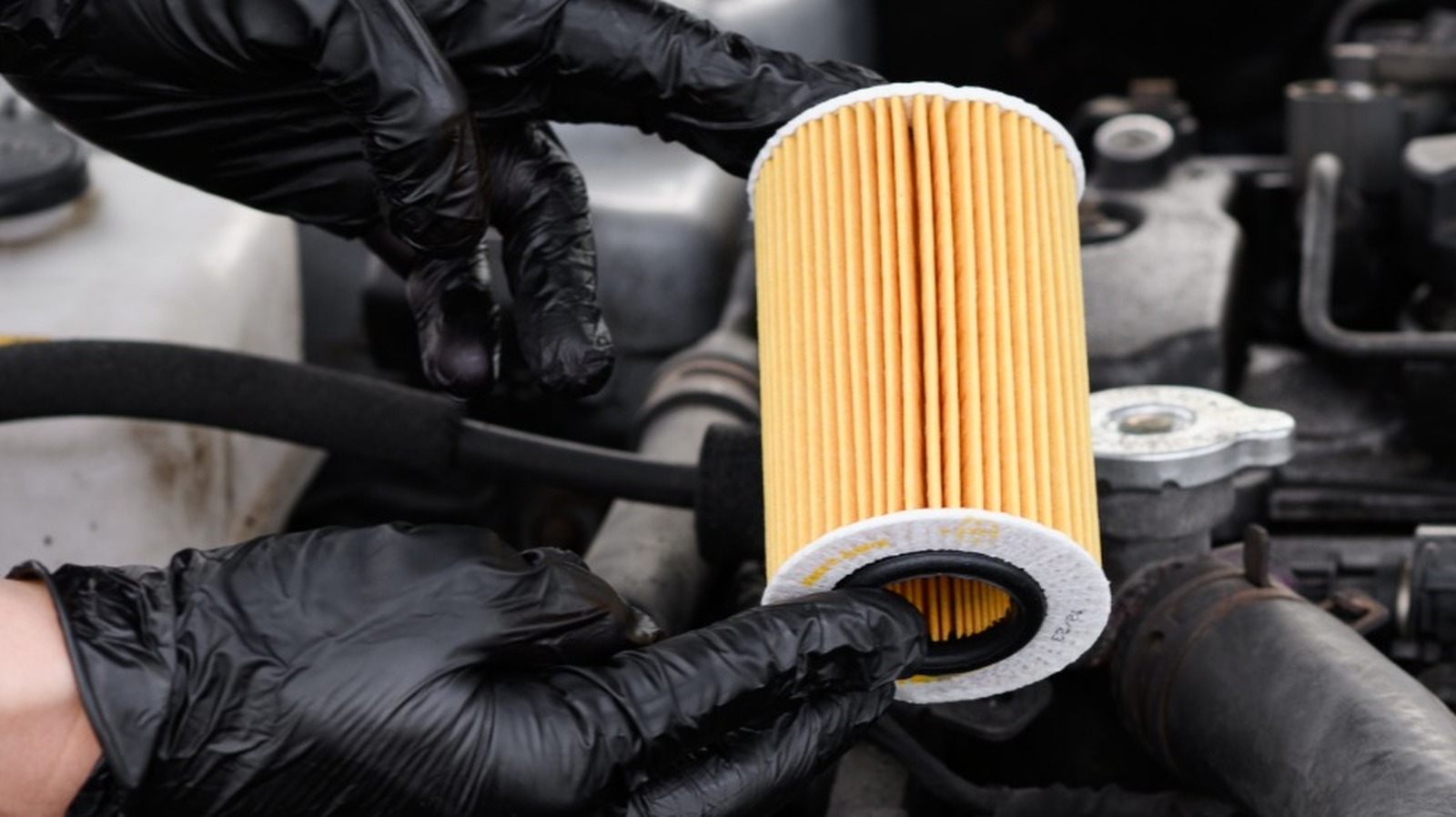
How Steer By Wire Is Revolutionizing Car Control and Design
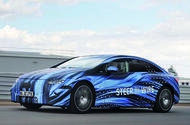 New steering technology is becoming increasingly prominent and is already in showrooms of various brands
New steering technology is becoming increasingly prominent and is already in showrooms of various brands
Steer by wire is coming of age quickly and on its way to the showrooms of various brands.
Mercedes will be the first German manufacturer to introduce the technology with a ZF-developed system that does away with mechanical connections between the driver and road wheels, relying instead on sensors and electric actuators.
Nio is also fitting the ET9 with a ZF system, Lexus is launching steer-by-wire with the RZ next year and Bosch has three Chinese customers for its steerby-wire through its joint venture, Bosch Huaya Steering Systems, with production starting soon.
Steer-by wire was once an automotive forbidden fruit: legislation dictated that the connection between driver and wheels was mechanical.
UNECE Regulation 79 changed that in 2003, making steer-by-wire legal in Europe. Safety is taken care of in Mercedes’ system mainly by duplicated controls, so if one electronic link between driver and steering fails, the other will remain in place.
Redundancy applies to every step, including dual electronic signal paths, duplicated power supplies and hardware actuators.
Even if the whole lot fails, there are other ways of maintaining control. In the unlikely event of complete failure, some automated steering is still possible using rear-axle steering and by braking individual wheels using ESP.
The Mercedes’ steering feedback unit (SFU) sends an electronic signal representing the driver’s inputs to the steering rack unit (SRU), which does the steering.
There’s no mechanical connection, so there’s no steering torque, or feel. To create some, the tyre-to-road contact is calculated and fed back through the system. Steer-by-wire systems are not simple bolt-on pieces of kit, and each manufacturer will do a considerable amount of work calibrating it on a model-by-model basis.
Mercedes has already done more than 621,000 miles (one million kilometres) bench testing and the same again on proving grounds and in real-world traffic.
Nio says there are packaging and design benefits with freedom to set the steering wheel angle and the amount of feedback, and control is more precise.
A rectangular steering wheel is possible, for a better view of the instruments, and full lock can be achieved with only a 240deg movement of the wheel.
The ET9 system fi lters more than 80% of road vibrations back through the wheel from the road, and the steering column can telescope in and out by 153mm. Nio also says it opens up opportunities for a Game Mode – which is important in the Chinese market, particularly.
It also enables other technologies in the future, such as steering using a joystick rather than a wheel.


